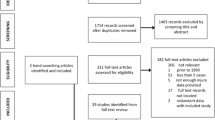Abstract
Pepper gas is used for riot control in many parts of the world. Yet, its effects on bystanders are largely unreported. We fielded a questionnaire-based survey of 500 bystanders exposed to gas when police used pepper grenades against belligerent ‘stone-pelters’ in the northern Indian state of Jammu & Kashmir. Of 294 non-combatants who consented to participate in our survey, 97 per cent developed cough and irritation of the throat within few seconds of breathing the pungent smelling gas. They reported respiratory problems, dermatologic symptoms, sleep disturbances, and mood changes with varying frequency. Sixteen reported exacerbations of underlying respiratory disorders, with one temporally related to death. Symptoms led 51 to get medical attention. Nearly all respondents reported that symptoms recurred on re-exposure. We conclude that use of pepper grenades can cause serious acute symptoms in non-combatants accidentally exposed. We recommend alternate methods of riot control – water cannons, baton charges, tasers, plastic or rubber bullets, and so on – that have no collateral side effects on non-combatants be considered for routine use.
Similar content being viewed by others
References
Smith, C.G. and Stopford, W. (1999) Health hazards of pepper spray. North Carolina Medical Journal 60: 268–274. http://web.archive.org/web/20000817004624/http://www.ncmedicaljournal.com/Smith-OK.htm, accessed 18 September 2013.
Cohen, M.D. (1997) The human health effects of pepper spray: A review of literature and commentary. Journal of Correctional Health Care 4 (1): 37–88.
Reilly, C.A., Crouch, D.J. and Yost, G.S. (2001a) Quantitative analysis of capsaicinoids in fresh peppers, oleoresin capsicum and pepper spray products. Journal of Forensic Science 46 (3): 502–509.
Chanda, S. et al (2004) Genotoxicity studies with pure trans-capsaicin. Mutation Research 557 (1): 85–97.
Reilly, C.A., Taylor, J.L., Lanza, D.L., Carr, B.A., Crouch, D.J. and Yost, G.S. (2003) Capsaicinoids cause inflammation and epithelial cell death through activation of vanilloid receptors. Toxicological Sciences 73 (1): 170–181.
Billmire, D.F. et al (1996) Pepper-spray-induced respiratory failure treated with extracorporeal membrane oxygenation. Pediatrics 98 (5): 961–963.
Steffee, C.H., Lantz, P.E., Flannagan, L.M., Thompson, R.L. and Jason, D.R. (1995) Oleoresin capsicum (pepper) spray and ‘in custody deaths’. American Journal of Forensic Medicine & Pathology 16 (3): 185–192.
Glinsukon, T., Stitmunnaithum, V., Toskulkao, C., Buranawuti, T. and Tangkrisanavinont, V. (1980) Acute toxicity of capsaicin in several animal species. Toxicon 18 (2): 215–220.
Caterina, M.J., Schumacher, M.A., Tominaga, M., Rosen, T.A., Levine, J.D. and Julius, D. (1997) The capsaicin receptor: A heat-activated ion channel in the pain pathway. Nature 389: 816–824.
Hayes, P. et al (2000) Cloning and functional expression of a human orthologue of rat vanilloid receptor-1. Pain 88 (2): 205–215.
Hwang, M.K. et al (2010) Cocarcinogenic effect of capsaicin involves activation of EGFR signaling but not TRPV1. Cancer Research 70 (17): 6859, doi:10.1158/0008-5472.CAN-09-4393.
Center for Disease Control. (2014) Riot control agent poisoning: Toxic syndrome description. http://emergency.cdc.gov/agent/riotcontrol/agentpoisoning.asp, accessed 13 January 2014.
Bley, K., Boorman, G., Mohammad, B., McKenzie, D. and Babbar, S. (2012) A comprehensive review of the carcinogenic and anticarcinogenic potential of capsaicin. Toxicologic Pathology 40 (6): 847–873, doi:10.1177/0192623312444471Epub 2012 May 4.
Guidotti, T.L., Prezant, D., de la Hoz, R.E. and Miller, A. (2011) The evolving spectrum of pulmonary disease in responders to the World Trade Center tragedy. American Journal of Industrial Medicine 54 (9): 649–660.
DiGrande, L., Neria, Y., Brackbill, R.M., Pulliam, P. and Galea, S. (2011) Long-term posttraumatic stress symptoms among 3271 civilian survivors of the September 11, 2001, terrorist attacks on the World Trade Center. American Journal of Epidemiology 173 (3): 271–281.
KT New Service. (2014) Government justifies use of tear gas, pepper grenades to control unruly mob. The Kashmir Times 12 July 2013. http://www.kashmirtimes.in/newsdet.aspx?q=19745, accessed 28 February 2014.
Author information
Authors and Affiliations
Additional information
The use of pepper spray for crowd control may affect many more people than the intended targets.
Rights and permissions
About this article
Cite this article
Koul, P., Mir, H., Shah, T. et al. Effects of pepper grenade explosions on non-combatant bystanders. J Public Health Pol 35, 499–505 (2014). https://doi.org/10.1057/jphp.2014.15
Published:
Issue Date:
DOI: https://doi.org/10.1057/jphp.2014.15




